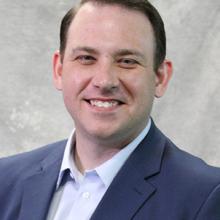
Three Michigan Farm Bureau (MFB) members delivered a consistently themed message to USDA officials during the ongoing Federal Milk Marketing Order (FMMO) hearing in Carmel Indiana.
Without long overdue FMMO reforms to help offset escalating operating costs, the dairy industry will continue to shrink and consolidate.
Van Buren County dairy farmer Tim Hood, Shiawassee County dairy farmer Brad Ritter and Branch County producer Brian Preston testified at the FMMO hearing, currently in its fourth week.
Preston, who operates a fourth-generation family dairy farm milking 1,000 cows along with a cousin, his dad and uncle, said FMMO reform is crucial to creating an opportunity for the fifth generation.
In addition to serving on the Michigan Milk Producers Association (MMPA) board of directors, Preston served on the American Farm Bureau Federation’s dairy working group for two years which ultimately resulted in the FMMO national forum held in Kansas City last fall.
Preston said there were three things that were widely accepted and unanimously adopted during that forum, resulting in the request for the FMMO hearing — the first in 20-plus years.
“First and foremost, the return to the ‘higher of’ for Class I milk pricing formula, an increase in the Class I differentials in all locations, and thirdly, understanding and advocating for a processing cost survey that would be mandatory and audited,” Preston said.
In addition to operating a 500-cow family dairy operation, Hood serves on MFB’s dairy advisory committee and spent 18 years as an MMPA director before retiring from that role in April.
Hood said dairy farmers in Michigan, like much of the country, have faced years of “unworkable margins, rapid changes in prices and market signals resulting in competitive inequities within the industry.”
“Between 2018 and 2023 — just five years — the nation has lost 9,546 licensed dairy herds, or 25% of the total dairy herd,” Hood said. “The loss in Michigan has been even more extreme, with 34% or 510 fewer licensed dairy herds today.”
In addition to supporting calls for a return to “higher of” pricing formula, Hood said increasing skim milk component factors for nonfat solids, protein and other solids and updating Class I differentials would directly impact his bottom line.
“Market regulations were partially intended to prevent predatory behavior from milk handlers and ensure farmers are being compensated fairly for the value of the milk they produce,” Hood said, adding that FMMO reform would, “help realign class prices, reduce incentives for processors to de-pool, bring more transparency to milk pricing and ensure the federal milk marketing order remains focused on promoting orderly marketing of milk.”
Ritter, who is part of a 300-cow family dairy operation, was questioned if the need to conduct mandatory and auditable “Make Allowance” plant cost studies called for in legislation outside of FMMO proposals being considered was necessary.
Ritter, who is member of MFB’s dairy advisory committee, responded: “Absolutely.”
Current FMMO make allowances have not changed since 2008, while costs of manufacturing dairy products used in the FMMO component price formulas have increased, according to National Milk Producers Federations.
The problem of maintaining proper make allowances in the FMMO pricing formulas is exacerbated by the persistent lack of accurate information relative to costs of manufacturing dairy products.
According to Ritter, significant spreads between Class III and Class IV prices paired with the delay associated with advanced pricing resulted in more money being paid out in Class III component values than what was collected from the plants across all classes of milk.
“This combined with the tactic of de-pooling used by many manufacturing plants to capture higher market prices lead to drastic imbalances and pool values reflected on farmers checks as negative producer price differentials,” said Ritter, with deductions as high as $8 per hundredweight.
While the imbalance was originally blamed on COVID-19, the losses and de-pooling have continued through early 2023 as Class IV prices have become the driver of the dairy industry.
“Cumulative pool losses have reached nearly $920 million since the formula went into effect in May of 2019, a clear reason why many organizations, including Farm Bureau, support a swift return to the higher of formula,” Ritter said.
During cross examination following their testimony, all three producers responded that they routinely use various forms of risk-management tools, including Dairy Margin Coverage and Dairy Revenue Protection insurance, as a hedge against escalating costs of production.
Even so, Ritter said fuel, electricity, labor costs and interest rates continue to take a toll on the bottom line.
Hood echoed similar concerns, adding that equipment and parts for repairs have seen price hikes as well as continued challenges of getting parts on a timely basis, with delays of six to 12 months becoming more common rather than the exception, meaning producers are forced to carry additional parts inventory for back up.
“The cost of just doing business has really escalated to the point where we used to dream about $20 milk, but $20 milk just doesn't cut it anymore — we're just trading dollars,” Hood said.
Share Story
Article Tags


